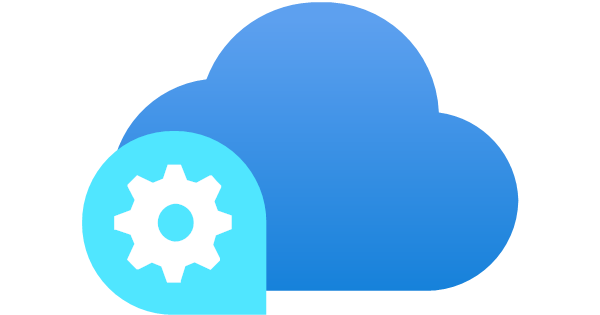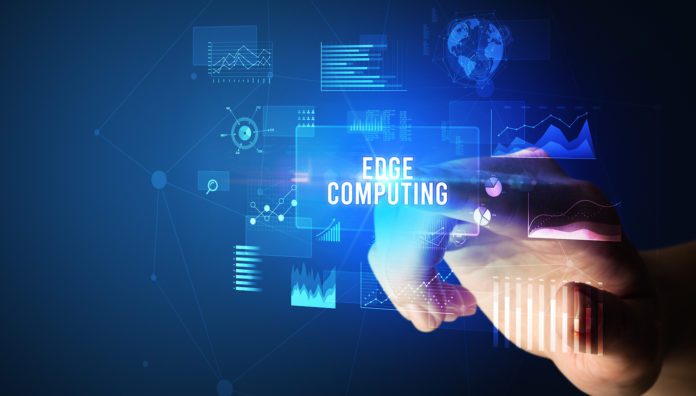Edge computing is a distributed computing framework that moves enterprise applications closer to data sources. These sources include local edge servers and Internet of Things (IoT) devices.
Some of the biggest drivers for edge computing include the demand for better performance by customers as well as the need for shorter transaction times. As such, having these enterprise applications close to data has advantages, such as reduced latency and quicker insights.
Here are the best edge computing companies to use for your network:
- Amazon Web Services (AWS): Best Overall
- Microsoft Azure: Best for intelligence at the edge
- ClearBlade: Best for IoT at the edge
- Dell Technologies: Best for analytics, management, scaling, and optimization at the edge
- EdgeConneX: Best for edge data centers
- Section: Best for edge deployment of containerized applications
Table of Contents
Comparing the top edge computing companies
See the table below for a quick overview of the defining characteristics of the top 6 edge computing companies.
| Company | IoT, ML, and AI at the edge |
Security | Free Trial | Demo |
|---|---|---|---|---|
| AWS | ✔ | ✔ AWS cloud security | ✔ | ✘ |
| Azure | ✔ | ✔ Activation keys, passwords, certificates, double encryption, and restricted access | ✔ | ✘ |
| ClearBlade | ✔ | ✔ API access encryption, authentication, and authorization | ✔ | 30-minute demo |
| Dell | ✔ | ✔ | ✘ | ✘ |
| EdgeConneX | ✔ | ✔ | ✘ | ✘ |
| Section | ✔ | ✔ Web application firewall (WAF), bot management, certificates, and IP restrictions and blocking | ✘ | Demo upon request |

Amazon Web Services (AWS): Best overall
Amazon Web Services (AWS) for the edge moves data analysis, processing, and storage closer to endpoints to enable users to deploy tools and API environments beyond AWS data centers.
With AWS edge services, users can create high-performance applications capable of processing data close to where it is generated. This results in intelligence, real-time responsiveness, and exceptionally low latency.
Key differentiators
- Application deployment: AWS allows users to build applications once and deploy them on both the edge and the cloud. AWS extends cloud services, infrastructure, and tools to any on-premises data center or co-location area as a fully managed service.
- Extensive capabilities: AWS for the edge enables users to unlock deep and vast edge use capabilities. Users can implement capabilities created for particular use cases such as hybrid cloud, IoT, 5G, and industrial machine learning (ML). More than 200 integrated device services provide users with a wide range of options to rapidly deploy edge applications and effectively scale to billions of devices.
- Powerful security: AWS infrastructure helps customers maintain high standards of security and compliance from the cloud to the edge. This allows users to reliably store and process data that needs to either be at the edge or remain on-premises.
Pros
- Consistency from the edge to the cloud
- Many integrated services ensure flexibility
- Pay-as-you-go pricing model
- Elastic and scalable to automatically vary the capacity of resources per requirements
Cons
- The price of services is variable based on factors such as region, meaning users should actively monitor their consumption of services to avoid sprawling costs.
- Hardware may be expensive for small companies.
Pricing
You can use the AWS pricing calculator to generate an estimate or contact AWS for more pricing information.

Microsoft Azure: Best for intelligence at the edge
Through Azure Stack Edge, Microsoft provides a managed service that takes Azure’s compute, intelligence, and storage to the edge. As such, Azure Stack Edge is suitable for machine learning at the edge, edge-to-cloud network data transfer, as well as edge and IoT solutions.
Azure Stack Edge allows users to run edge computing workloads and offers quick insights through the use of compute and hardware-accelerated ML at edge environments for artificial intelligence (AI) and IoT workloads.
Key differentiators
- Hardware-as-a-service model: Azure makes it easy for users to get started as they can order their appliances from the Azure portal and pay monthly through their Azure subscriptions. Users can also manage, update, and configure their Azure Stack Edge through a seamless cloud-to-edge experience presented as an intuitive management portal with effective development tools.
- AI and ML applications: Azure Stack Edge subscribers can analyze their data for rapid actionable insights through hardware-accelerated AI and ML. They can create and train ML models either in Azure or through Azure Cognitive Services and use the NVIDIA TP4 GPU or Intel VPU to locally accelerate results. Users can also upload data subsets or full datasets to the cloud for model retention, thus making their edge devices smarter.
- Data access flexibility: Azure Stack Edge enables optimized data transfers to Azure while maintaining local access to files.
Pros
- Less latency and connectivity issues by using ML at the edge
- ML models help alert IT to sensitive data and potential data violations locally to take action and prevent sending non-compliant data to the cloud
- Optimized hybrid cloud connections
- Easy network data transfer from the edge to the cloud
Cons
- Could be more integrable with external tools.
- The highly configurable nature of Azure Stack in general may introduce complexity as well as a learning curve for new users.
Pricing
Azure Stack Edge’s monthly subscription fee starts from $399 USD (excluding shipping cost) for the Azure Stack Edge Pro 2, with Azure Stack Edge Pro, Pro R, and Mini R all priced higher than the Pro 2. Visit the Azure Stack Edge pricing page for custom pricing information.

ClearBlade: Best for IoT at the edge
ClearBlade is an edge computing company that empowers enterprises to speedily engineer and run scalable and robust IoT applications in real time.
ClearBlade runs securely whether on-premises, in the cloud, or at the edge. It helps enterprises to consume, analyze, adapt, and make decisions on data in real-time and on a large scale.
In addition, users can maximize the impact of their data at the edge by leveraging local compute, AI, and actionable visualizations from a single platform that is integrable with any enterprise system.
Key differentiators
- Built for security: ClearBlade offers its customers authentication, authorization, and encryption of API access. This extends to tokens and certificates.
- Flexible integration: ClearBlade offers connectivity to its users through MQTT, Sockets, and REST. It also leverages prebuilt patterns for Zigbee, BLE, and Thread, among others.
- Zero downtime: Customers do not need to worry about the impact of interruption to their internet connection, as devices carry on with their real-time operation, maintaining 100% uptime.
- Cloud to edge coding: Whether users choose to develop independent edge applications for their customers or to develop on the cloud and push to the edge, ClearBlade ensures their code is available where they need it to be.
Pros
- Offline continuity of devices
- A common software stack
- User and device states are synced with IoT systems as they go online and offline
- Strong integration capabilities as ClearBlade offers connectivity through MQTT, REST, and more
- Adaptable deployment since ClearBlade connects gateways, devices, and clouds across many protocols
Cons
- Can be a complex solution for managing the IoT data of smaller businesses or those with limited resources.
- Tech support may be limited for companies with basic subscriptions.
Pricing
Although ClearBlade offers a free demo, you’ll need to contact them for custom pricing information.

Dell Technologies: Best for analytics, management, scaling, and optimization at the edge
Dell Technologies leverages a range of compute, storage, and networking capabilities to bridge almost any edge deployment.
Dell offers Dell Edge gateways, VxRail hyper-converged infrastructure (HCI), and Dell EMC PowerEdge servers that are powered by Intel Xeon processors. The company also has edge-computing management and orchestration features.
Dell has edge solutions in numerous industries including manufacturing, digital cities, retail, healthcare, utilities, and transportation, among others.
Key differentiators
- Intrinsic Protection: Dell Technologies looks to simplify the edge for its customers by securing the operational environment at the edge. The company also consolidates and streamlines data management and operations when its users expand as the trade-off of expansion is often efficiency and simplicity.
- Insights on Demand: Dell enables customers to approach their edge policies strategically and to assess their environments to create effective plans that help them generate actionable insights.
- Consolidate as you expand: Dell provides solutions that simplify and consolidate information and operational technology to help users easily scale their capabilities.
Pros
- Helps users tame environmental latency constraints
- Covers a variety of industry verticals including digital cities, energy, manufacturing, healthcare, retail, and more
- Delivers an edge operations platform that addresses the challenges of scaling, management, optimization, and security of the edge.
Con
- Dell EMC servers can be pricier than alternatives.
Pricing
Contact Dell for a custom quote, as they haven’t publicly listed their prices.

EdgeConneX: Best for edge data centers
EdgeConneX is a global data center provider that creates and operates effective, highly proximate, purpose-built data centers. These data centers are customized to the optimal power, size, and locational needs in any deployment, anywhere in the world.
In addition, EdgeConneX operates at least 40 data centers in more than 30 markets, serving hyperlocal to hyperscale markets that are vital to their customers.
Key differentiators
- High-density power: Offers high levels of capacity and efficiency for servers and applications through its high-density power offering of up to 30kW per rack.
- Extensive interconnection: Optimizes the delivery and distribution of digital content to ensure effective audience experiences and encourage better audience retention and customer adoption rates. This ultimately helps monetize high-value digital content.
- Customer collaboration: EdgeConneX is actively engaged with players, ranging from augmented and virtual reality and autonomous vehicles to 5G and IoT, to offer ultra-low latency solutions.
- Hyperlocal to hyperscale capacity: Has colocation facilities built near crucial network and cable operator locations.
Pros
- EdgeOS grants visibility into all data center operation aspects through a single distinct self-management app
- Offers solutions that reduce latency and help customers stay close to consumers, cloud services, networks, IoT devices, or enterprises
- Offers diverse network access to MSOs, ISPs, and mobile and fiber providers
- Great user experience that results in improved customer service and satisfaction
Con
- Edge data centers often face uncontrolled environments in comparison to traditional data centers, which may lead to performance erosion and downtime.
Pricing
Contact EdgeConneX for accurate pricing information.

Section: Best for edge deployment of containerized applications
Section upholds modern DevOps principles to offer engineers the flexibility and control to run any workload, anywhere. The platform takes a container-based approach to HTTP traffic delivery and has a vast library of edge compute modules, high in performance and availability, that are deployable anywhere along the edge continuum.
Users can build or use their own edge containers, as Section helps them to deploy their existing containerized applications to the edge with no downtime.
Key differentiators
- Kubernetes Edge Interface: Users can deploy to multiple edge locations as simply as they would to a single Kubernetes cluster. The Kubernetes Edge Interface helps to manage and deploy workloads to the Section Global Edge Cloud by offering a Kubernetes-consistent interface.
- Adaptive Edge Engine: Delivers low resource consumption and high performance through its automatic and optimized scaling and placement of distributed edge applications. Users have control over the costs, performance, placement, and scaling at the edge.
- Composable Edge Cloud: Includes a vendor-agnostic network of infrastructure providers.
Pros
- Composable Edge Cloud offers users immense scale, reach, reliability, and flexibility.
- Rapid deployment to edge locations.
- Section uses a dynamic orchestration engine to deliver predictable and transparent costs.
- Uses the largest DDoS mitigation networks to prevent DDoS attacks.
Con
- Section places limits on how much resources like CPU and RAM hours can be used in a month.
Pricing
Section has several pricing tiers: Free (for a single project per month), Standard ($20/proj./mo.), Pro ($196/proj./mo.), and Enterprise (custom). The provider details their pricing model on their pricing page, but you’ll need to contact Section for a quote specific to your potential use case.
Considerations for purchasing an edge computing solution
There are several factors to consider when choosing your edge computing provider, starting with setting your goals and requirements and then determining which solution or solutions can provide the best scalability, security, and performance for your budget.
Goals and requirements
Before you can determine the edge computing provider that’s best for you, you need to have clearly defined your business goals and requirements. Having an edge strategy will also help align your business goals and requirements with the right solution.
Solution or solutions?
It’s possible—and in some cases, may be necessary—to have multiple edge solutions in a single enterprise’s portfolio. Where multiple solutions are needed to satisfy your use case, you should ensure they complement rather than overlap each other. You should also consider the reliability and availability of your prospective solution, as downtime is costly.
Scalability, flexibility, and adaptability
You’ll also want to know ahead of time how flexible and adaptable a solution is with respect to your use case. Can the solution scale alongside your enterprise? Will it evolve with the changes in the edge computing market? Or will you be forced to change providers every so often?
Security
It cannot be overstated how important it is to consider the security offered by the solutions in consideration. If you require specialized firewalls, gateways, and other security-centric solutions to secure data and ensure compliance and privacy, then you can easily reject the providers that don’t deliver them. Remember, though, that you can have multiple solutions in your enterprise portfolio. Therefore you can also seek providers that complement the solution you select.
Budget, latency, and support
Other considerations to make note of include how a provider handles latency, the quality of customer service and support, and how your budget conforms to your shortlisted solutions.
What do edge computing companies do?
Edge computing companies continually offer solutions that seek to satisfy the need for edge computing, which is triggered by factors like latency, bandwidth, privacy, and autonomy. The need for real-time data for applications like augmented and virtual reality (AR and VR) and autonomous vehicles, among others, provides an area of focus for edge computing providers.
These companies also provide solutions to increased bandwidth usage caused by the ubiquity of IoT devices by tailoring solutions that enhance bandwidth usage and availability. They also create solutions for use cases in networks where autonomous operation is expected between sensors and actuators, even if the connection to the cloud is lost.
Aside from VR and AR, edge computing companies enable use cases such as smart homes, cloud gaming, virtualized radio area networks (vRAN) and 5G, smart grids, predictive maintenance, and remote monitoring.
5 common edge computing solution features
1. Local processing
Processing high volumes of data near or at the edge ensures that enterprises enjoy optimized performance in their day-to-day operations, compared to having to send all data to a centralized server.
2. Automation and predictive maintenance
Edge computing solutions often leverage automation and predictive maintenance to ensure the hardware used at the edge is running without interruptions, downtime, or preventable errors. This results in improved productivity in smart work environments.
3. Solutions to lower IT costs
Many edge computing companies promise lower IT costs in their value propositions, since edge computing optimizes IT expenses through local data processing, minimizing transmission costs and discarding unnecessary data at the edge.
4. Use of data from sites with limited bandwidth
Edge computing solutions often provide methods to use data from areas that either have limited network bandwidth or intermittent internet connectivity. Edge devices can capture relevant data, which can be transmitted to a data center once there’s enough bandwidth.
5. Physical features
Hardware offered by edge providers needs to have a small form factor but be equipped with significant data storage. These hardware elements also need to be resistant to the negative effects of their external environments, such as extreme temperatures and sudden movements or vibrations in their environments. They should also be tamper-proof, in case they’re exposed to potential vandalism, unauthorized physical access and theft.
Featured IoT Software
Bottom line: Choosing the best edge computing company for your business
There are numerous edge computing companies that cater to all sorts of use cases across the edge computing spectrum. Your choice should be based on your business goals and requirements, an edge strategy, your security and compliance needs, the number of solutions you require to satisfy your use case, and the ability of the solutions to scale as you scale—not to mention, of course, your budget. Whenever a demo is available, be sure to sign up for a first-hand assessment of whether the prospective solution is a fit.
Make sure you have a good plan for securing your edge network in place—and select one of the best enterprise network security companies to partner with.




